Abstract
The common assumption that future increases in the number of elderly people will result in a parallel increase in the burden of care of long term disabled survivors of stroke was examined. The number of patients with first ever strokes and the net number of people handicapped after these strokes in England and Wales every five years until 2023 have been projected. Between the base year 1983 and the year 2023 an increase in population of about 5% will occur; first ever strokes are projected to increase by about 30% and deaths within six months of first ever strokes by about 40%. The net number of severely handicapped people six months after a first ever stroke is projected to increase by only about 8%, however, and the net number of people who are moderately or severely handicapped by only 4%. This paradox occurs because first ever stroke often kills people who have been handicapped by other causes, particularly if they are elderly. It is concluded that despite the limitations of these data they strongly suggest that the increased burden of health care of patients with first ever strokes in the next 40 years will be primarily that of caring for those in the acute stages of stroke and not with the management of chronic handicap after a stroke.
Full text
PDF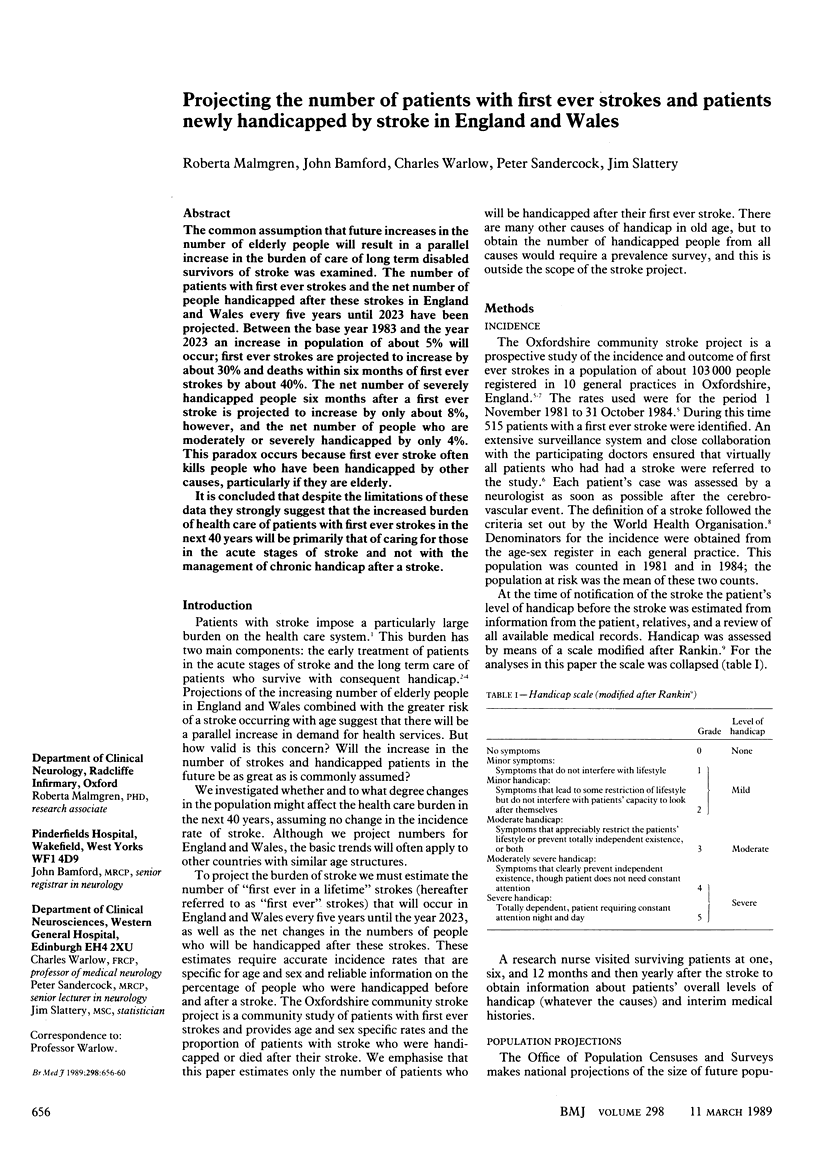
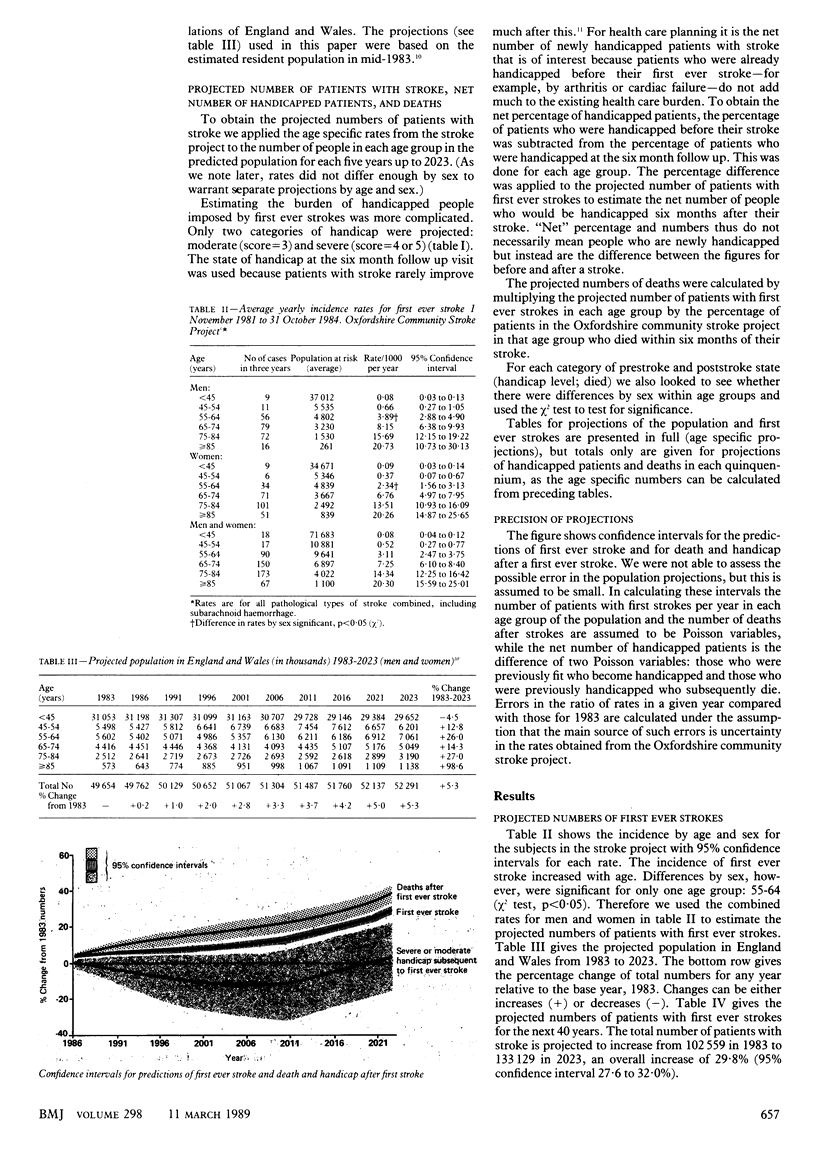
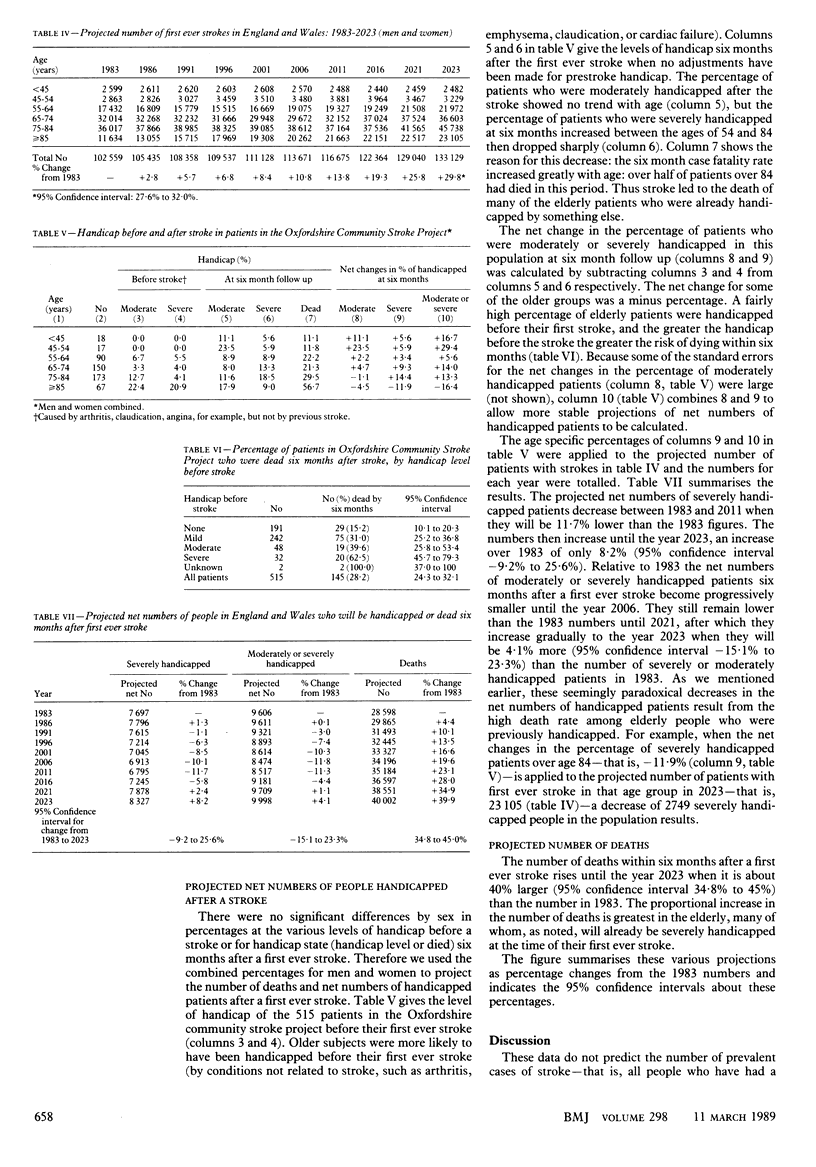
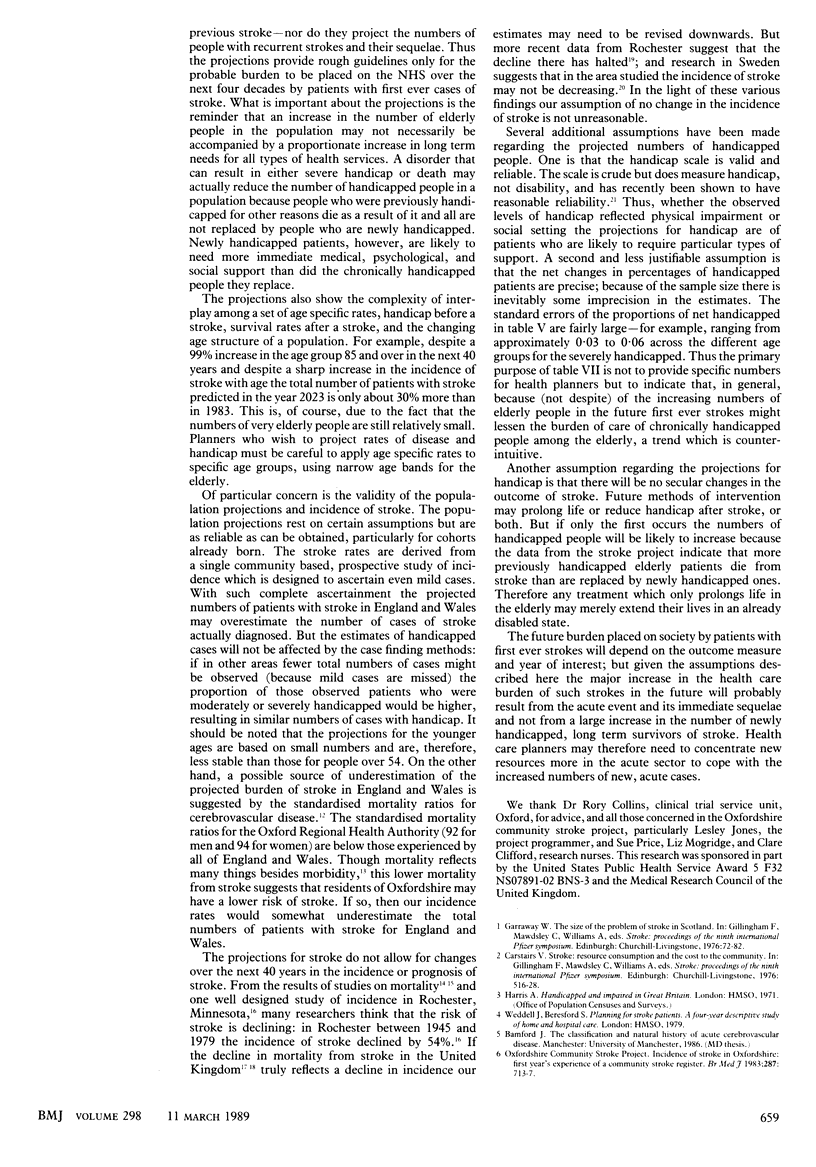
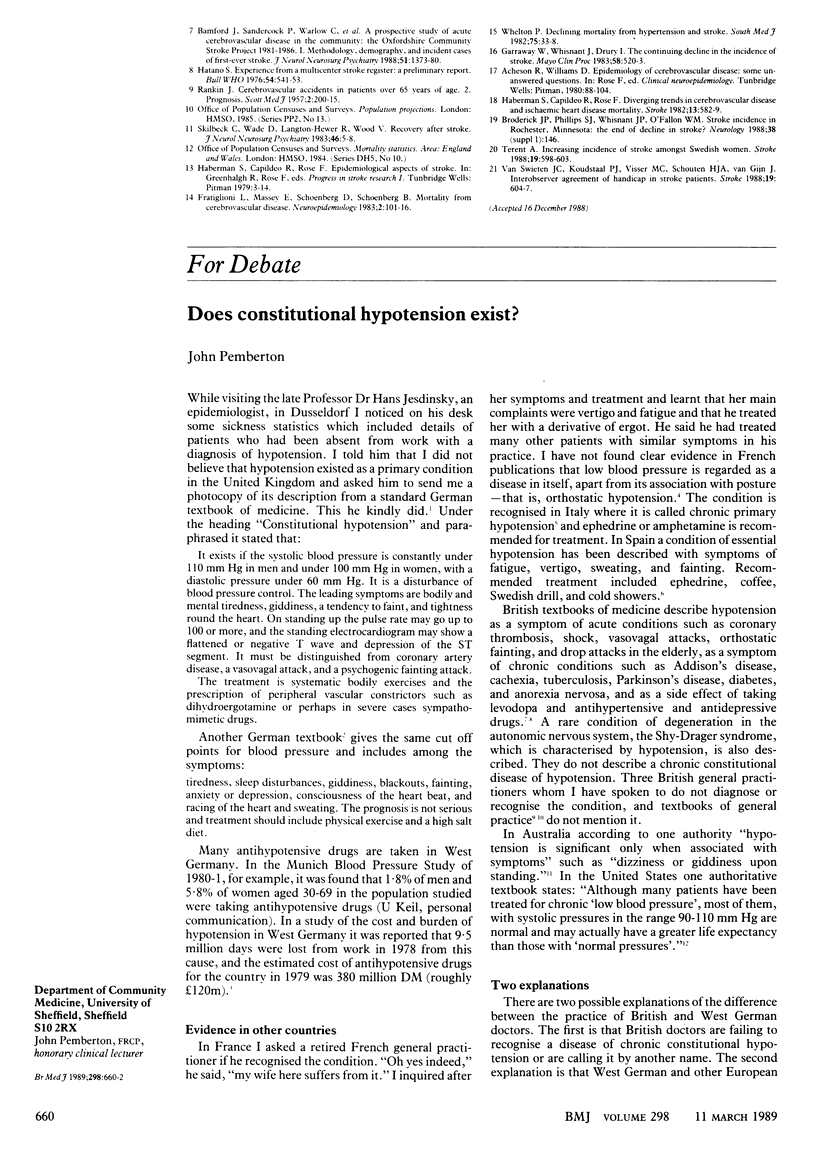
Selected References
These references are in PubMed. This may not be the complete list of references from this article.
- Bamford J., Sandercock P., Dennis M., Warlow C., Jones L., McPherson K., Vessey M., Fowler G., Molyneux A., Hughes T. A prospective study of acute cerebrovascular disease in the community: the Oxfordshire Community Stroke Project 1981-86. 1. Methodology, demography and incident cases of first-ever stroke. J Neurol Neurosurg Psychiatry. 1988 Nov;51(11):1373–1380. doi: 10.1136/jnnp.51.11.1373. [DOI] [PMC free article] [PubMed] [Google Scholar]
- Bridgers S. L., Ebersole J. S. EEG outside the hairline: detection of epileptiform abnormalities. Neurology. 1988 Jan;38(1):146–149. doi: 10.1212/wnl.38.1.146. [DOI] [PubMed] [Google Scholar]
- Garraway W. M., Whisnant J. P., Drury I. The continuing decline in the incidence of stroke. Mayo Clin Proc. 1983 Aug;58(8):520–523. [PubMed] [Google Scholar]
- Haberman S., Capildeo R., Rose F. C. Diverging trends in cerebrovascular disease and ischaemic heart disease mortality. Stroke. 1982 Sep-Oct;13(5):582–589. doi: 10.1161/01.str.13.5.582. [DOI] [PubMed] [Google Scholar]
- Hatano S. Experience from a multicentre stroke register: a preliminary report. Bull World Health Organ. 1976;54(5):541–553. [PMC free article] [PubMed] [Google Scholar]
- RANKIN J. Cerebral vascular accidents in patients over the age of 60. II. Prognosis. Scott Med J. 1957 May;2(5):200–215. doi: 10.1177/003693305700200504. [DOI] [PubMed] [Google Scholar]
- Terént A. Increasing incidence of stroke among Swedish women. Stroke. 1988 May;19(5):598–603. doi: 10.1161/01.str.19.5.598. [DOI] [PubMed] [Google Scholar]
- Whelton P. K. Declining mortality from hypertension and stroke. South Med J. 1982 Jan;75(1):33–38. doi: 10.1097/00007611-198201000-00010. [DOI] [PubMed] [Google Scholar]
- van Swieten J. C., Koudstaal P. J., Visser M. C., Schouten H. J., van Gijn J. Interobserver agreement for the assessment of handicap in stroke patients. Stroke. 1988 May;19(5):604–607. doi: 10.1161/01.str.19.5.604. [DOI] [PubMed] [Google Scholar]


